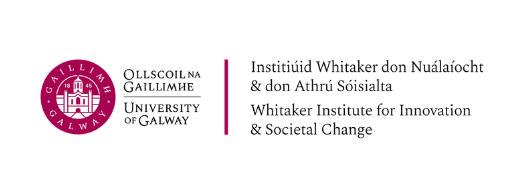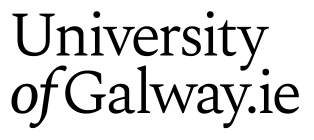PROMOTING AND SUPPORTING THE SUSTAINABLE DEVELOPMENT OF THE CREATIVE ECONOMIES.
The ‘Creative Edge’ project brings together universities, development agencies and industry bodies in Ireland, Northern Ireland, Finland and Sweden to exploit the potential of the creative economy in peripheral regions of Europe.
The 2008 financial crisis brought a drop in global demand, which resulted in the contraction of international trade and the world’s economies slipped into recession. Across Europe, this has been reflected in massive spending cuts, increased company liquidation and increased unemployment.
However, the creative economy has bucked the trend. World exports reached $650 billion in 2010 – nearly two and half times their 2002 level [1]. As one of Europe’s most dynamic sectors, it contributes around 2.6 % to EU GDP, has a high growth potential, and provides quality jobs to some 5 million people in the EU-27 [2]. “Estimates value the sector at 7% of world GDP and forecast 10% growth per year” [3].
The main objectives of the Creative Edge project are to increase the active participation of local creative firms and organisations in global markets; and boost their ability to attract and utilise local emerging talent in these markets. This is vital for peripheral regions, where the creative economy is expected to grow strongly in coming decades.
However, there are large disparities within the Northern Periphery Programme region of Europe in the extent to which nations are engaged in the creative economy. The Creative Edge project itself complements similar, related work and points to the potential growth of the sector as well and the positive spillovers to other sectors of the economy [4].
Of particular policy relevance are the constraints faced by new and established creative industries in the NPP region. Consultation shows most people find themselves confined by their inability to access international markets and share information and learn from contemporaries here and abroad.
This was the starting point for the Creative Edge project. A partnership of the Western Development Commission, SEED in Craigavon and National University of Ireland, Galway initiated an international collaboration with Film i Vasterbotten (Sweden) and Kemi-Tornio University (Finland). The four main objectives are:
- Map the creative sector in peripheral European regions. This contributes to a growing academic literature on the impact of creativity on economic well-being.
- Create an export platform to provide creative industries in peripheral regions with opportunities to access international markets via real and virtual presences.
- Establish an employment bank for employers and potential employees in an economy where skills requirement vary quickly. This bank provides real and virtual meeting places for information- and knowledge-sharing.
- Develop creative places e.g. using vacant high-street premises for creative talent to showcase their work.
The Creative Edge project is a practical programme, which enables virtual and actual networks to emerge to meet the challenges of e.g. accessing new markets, job opportunities, scalability, collaboration, information exchange, business development skills and affordable creative spaces.
This enables and empowers latent creative abilities to link and grow in a measurable way. That creates and sustains job and export opportunities, enhances creative human capital and improves regional social capital.
In a virtuous circle, creative people generate and develop ideas. These evolve into the production of creative goods and services. And the interaction between creative people and industries enhances innovation and creativity.
Funded by

Project Partners
Whitaker Institute at NUI Galway
The Western Development Commission, a statutory body established to promote both social and economic development in the Western Region of Ireland
South Eastern Economic Development, a grouping of local authorities in the eastern part of Northern Ireland
Kemi-Tornio University of Applied Sciences in Lapland, Finland
Film i Västerbotten, a regional resource centre for film and video in the County of Västerbotten, Sweden
Related Publications
- UNCTAD (2010) Creative Economy Report.
- EU Green Paper Unlocking the potential for Cultural and Creative Industries
- Ireland, Department of the Taoiseach (2008) Building Ireland’s Smart Economy: A Framework for Sustainable Economic Renewal. Dublin: Government Publications Office.
- Indecon (2009) Assessment of Economic Impact of the Arts in Ireland
- Collins, P et al. (2011) Economic Impact Assessment: The Creative Sector in the Western Region.
For more information
Dr Patrick Collins
School of Geography and Archaeology and the Whitaker Institute
National University of Ireland, Galway

